Rurikō-in|瑠璃光院
Overview
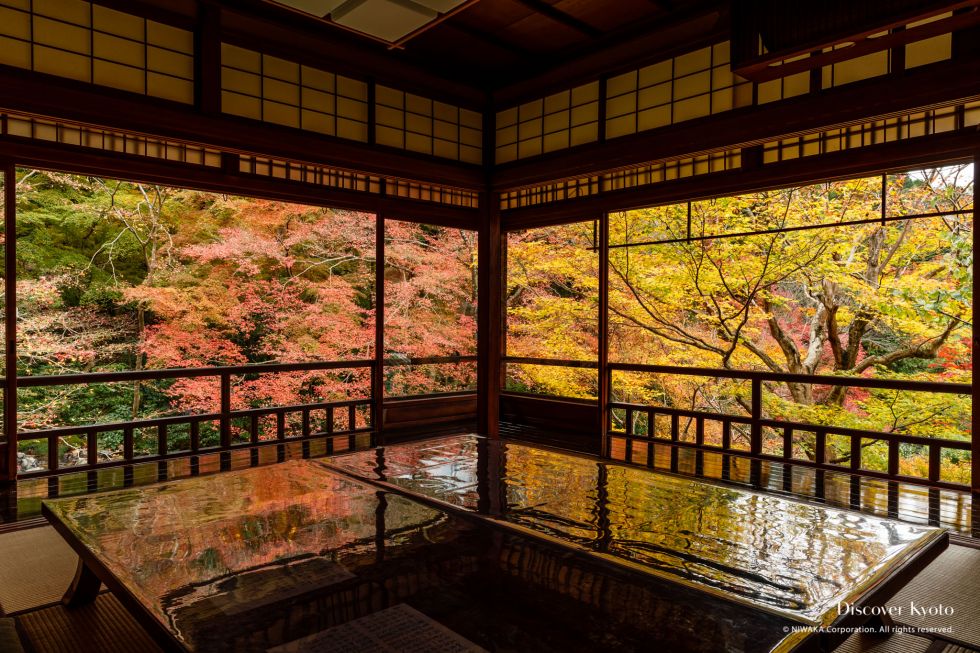
Nestled at the western base of Mt. Hiei in the northern mountainous area of Yase, Rurikō-in is the former villa of a Meiji period statesman with resplendent residential architecture that was later converted into a temple. Open only in the fresh spring aomomiji season and the fall kōyō season, Rurikō-in is particularly famous for their second-floor view full of lush maple leaves that reflect on the building’s polished interior. Despite its relatively steep entrance fee, Rurikō-in’s beauty and nature-rich, remote location more than make the trip worth it for those looking to see something memorable.
The main garden of Rurikō-in is inspired by the Pure Land, which is said to be bathed in an ethereal azure hue.
Features
Sutra Copying
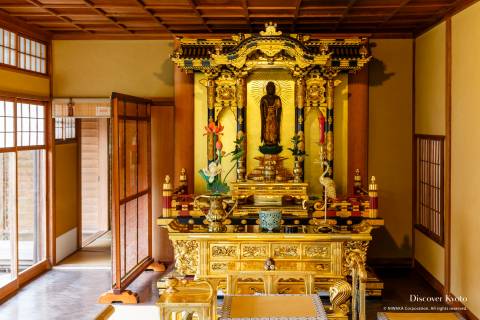
Upon making your way from Rurikō-in’s entrance gate to the main buildings, you will first be guided to the second floor of the Shoin (Drawing Room). There you will find a line of low desks with cushions set up for visitors to take a seat and try a Buddhist devotional practice known as shakyō (sutra copying). Shakyō has been practiced for hundreds of years, as parishioners copied the words of Buddhist sutras in order to devote them to the divinities. Rurikō-in provides a sample page at the entrance that you receive along with your ticket, so all you need to do is copy the kanji and fill out some information like your name and prayer in order to try some light shakyō for yourself. On your trip through Rurikō-in, you can leave your copied sutra in the room with the Buddhist altar, in a tray set up on an offerings desk for that purpose.
Garden of Lapis Lazuli (Ruri no Niwa)
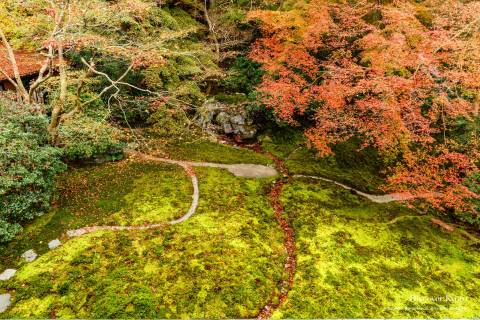
The main garden of Rurikō-in, this Ruri no Niwa is inspired by the Pure Land, which is said to be bathed in an ethereal azure hue. Composed of two very different views, the Ruri no Niwa is first seen from the second floor of the Shoin, where the window view is full to the brim with gorgeous leaves courtesy the garden’s maple trees. This view is what has made Rurikō-in famous in recent years, with the gorgeous greens of fresh leaves or the warm tones of autumn ones reflected off the polished wooden floors and the large tables set on the inner tatami mats.
Heading down to the ground floor reveals a tatami mat room with a calming view of the garden’s base. Amidst the thick carpet of varied moss, a small stream wanders from the large boulder set in the back amidst the maple tree trunks, and guests can enjoy a leisurely reflection while viewing some of the displayed treasures, including large chunks of namesake lapis lazuli and a scroll depicting the retinue of the Amitabha triad who appear to welcome the deceased.
Garyō no Niwa

Rurikō-in’s second garden is the Garyō no Niwa, which means “Garden of the Reclining Dragon”. This garden represents a dragon who has descended from heaven to drink of the pond. Built on a slope with a stream flowing downwards and ending in a koi pond, this garden also features a variety of moss species that carpet the ground. Looking out over the garden are charming rooms decorated with some of the temple treasures, as well as the Kikakutei tearoom.
Kamaburo Bath
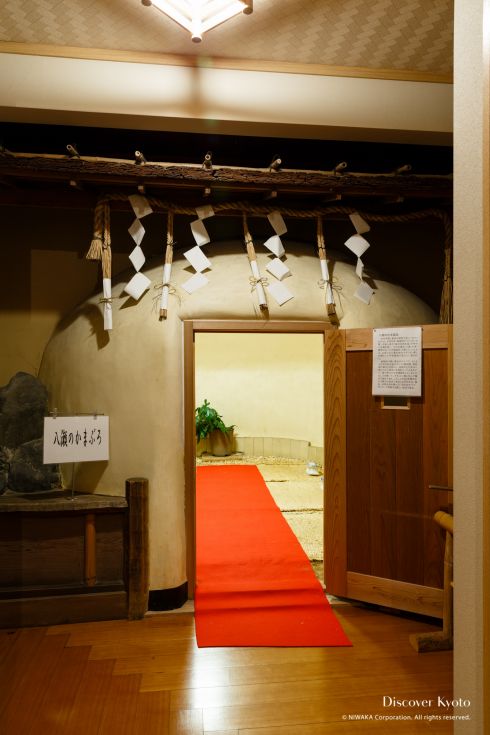
The kamaburo is one of the prototype forms of the Japanese steam bath, and Rurikō-in is home to one of the few remaining traditional examples. A round structure traditionally made of earth, this kamaburo traces its history back to 672, when it was said that Emperor Tenmu, then just a Prince, was injured by an arrow to the back. The locals introduced him to their kamaburo, which helped heal his wound.
Bathers in this steamy sauna lay down on straw mats and let the steam rolling off the brazier start them sweating, which is said to be good for all manner of health problems. At Rurikō-in you can take a peek inside- and maybe you’ll be inspired to try kamaburo yourself!
History
Rurikō-in is the former villa of Prince Sanjō Sanetomi (1837 – 1891), a prominent imperial court noble and Meiji period politician. This villa, called Kikaku-tei, was renovated in the 1930’s by a master architect of the sukiya-zukuri residential style, Nakamura Sotoji. During this period the gardens were added by a well-known garden designer of the time, Toemon Sano.
Sometime after this renovation, the villa came to be home to a Buddhist altar that enshrines Amitabha Buddha ("The Buddha of Immeasurable Life and Light"), and became a temple named Rurikō-in, spelled with the kanji characters for “lapis lazuli light”.
Access
Address
〒601-1255 京都府京都市左京区上高野東山55番地
| TEL | 075-781-4001 |
| WEB | http://rurikoin.komyoji.com/lp/en/ |
Admission
- General Admission: ¥2,000
Hours
- General Admission: 10:00 - 16:30
- Open: Late Spring (4/15 – 6/15), Fall (10/1 – first Sunday in December)
Transportation
- Eizan Train Line ⇒ Yase Hieizan-guchi Station ⇒ 5 minutes walking
- Kyoto Bus ⇒ Yase Eki-mae Bus Stop ⇒ 7 minutes walking
- Hieizan Cable Car ⇒ Yase Station ⇒ 5 minutes walking
Gallery
-
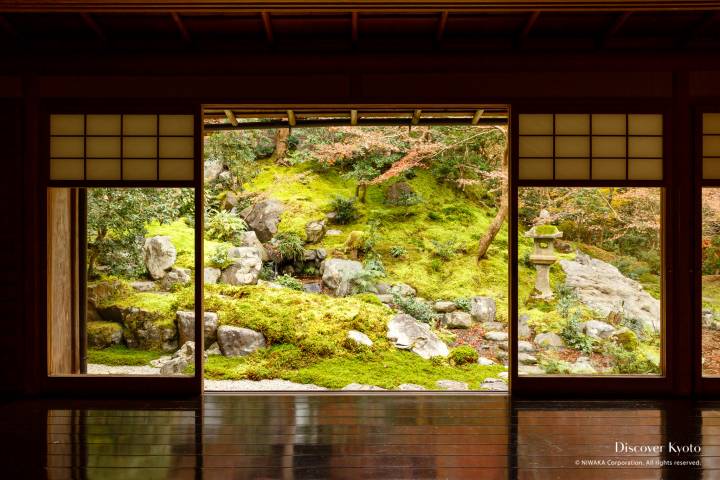
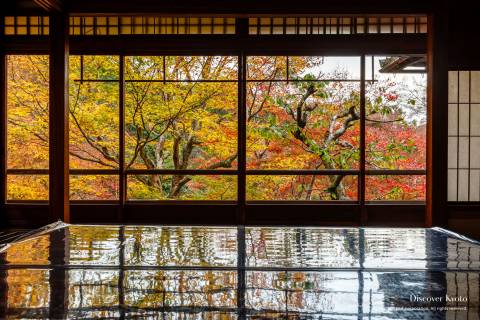

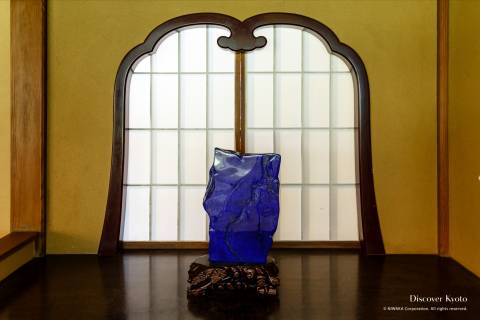
 +16
+16
